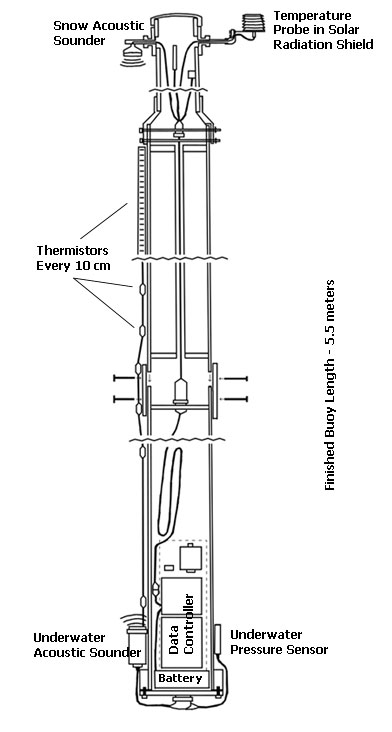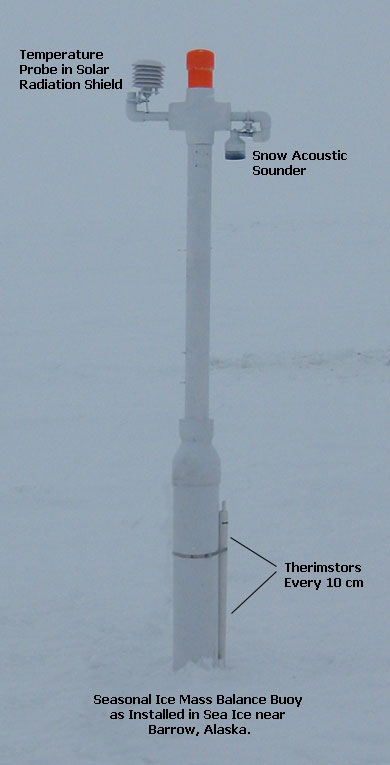The Arctic has seen a dramatic increases in the relative amount of thinner, seasonal sea ice. This recent development has motivated researchers at CRREL to develop a new buoy that can survive in these thinner ice conditions. The Seasonal Ice Mass Balance buoy (SIMB) has been designed around a single six inch diameter spar-buoy type hull that contains, protects, and positions the sensors. Like the original Ice Mass Balance Buoy (IMB) the SIMB sensor package includes a baraometer, an air temperature sensor, , a string of thermistors to measure the air-ice-ocean temperature profile, and a pair of acoustic rangefinders (sounders), one above the ice and one below the ice. Data from the acoustic rangefinders are used in determining ice thickness, ice growth and ablation. The SIMB also has an underwater pressure sensor, which provides information on the mass balance of the entire ice flow. Unlike the IMB, all of the instrumentation of the SIMB are contained within or mounted to the Hull and external wires are reduced to an absolute minimum. Not only does this design make the SIMB more robust, it makes installation easier, as there is only one mounting hole to drill through the ice cover. The buoy hull is designed with a strong righting moment, enabling the buoy to position the sensors accurately in relation to sea level.


The design of the Seasonal Ice Mass Balance buoy is modular and can be packed for shipping in three sections. The sections of the SIMB Buoy are sized to fit within typical air express size limits. The buoy section’s size also allow for easy loading and transport to deployment sites using a helicopter. The hull is made of PVC components, greatly reducing the hull’s cost and providing a good thermal match to sea ice.
The top section of the SIMB protects the instrument wires and serves as a support tower for the transmitting antenna, air temperature sensor, barometric pressure sensor, and downward looking acoustic sounder which measures the distance to the snow or ice surface. The top section also houses the satillate transmitter. The middle section provides buoyancy, supports the top section, and provides an attachment point for the thermistor string. The bottom section houses the data controller and battery, and provides an attachment point for the underwater sensors. The bottom section contains the ballast, which provides a righting moment to the buoy and establishes the floatation height.
The sensor package includes a barometer and air temperature sensor, a string of thermistors to measure the air-ice-ocean temperature profile, and a pair of acoustic rangefinders (sounders), one looking down to determine the position of the snow/ice surface and one looking up to determine the bottom positon of the ice floe. Data from these acoustic rangefinders are used determining ice thickness, ice growth and ablation. The SIMB also has an underwater pressure sensor, which provides information on the mass balance of the entire ice floe.